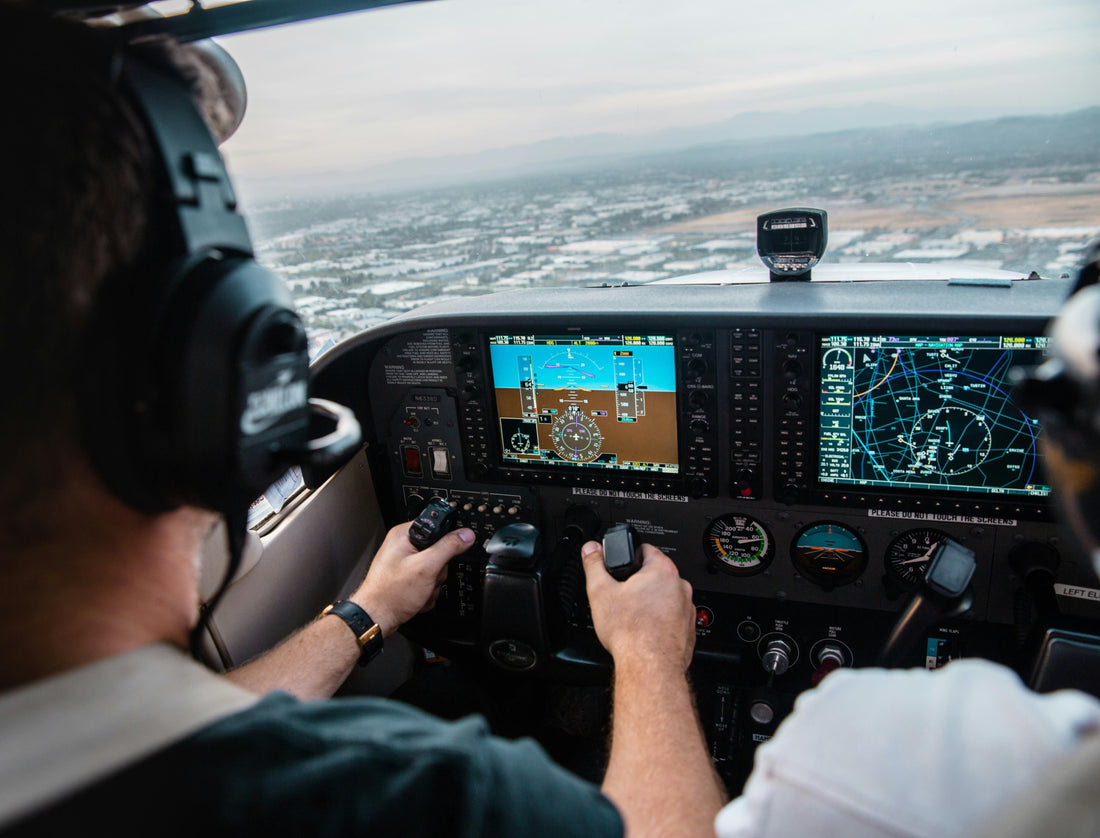
Top 10 Commercial Pilot Oral Exam Questions (with Answers)
By Leslie Caubble, CFI/IGI
Every pilot we’ve worked with at Northstar Aviation has had at least one checkride surprise, and the commercial pilot oral exam tends to be where it happens. Many of our fellow aviators described the commercial checkride as the easiest overall, just a more advanced version of the private pilot test. Most pointed to privileges and limitations as the key topic to study, and beyond that, it felt like familiar ground.
However, even with solid preparation, unexpected questions can still arise. One oral exam started strong, with the pilot confident in each answer, until the examiner shifted to the pitot-static system. The conversation quickly moved from basic operation to detailed blockages and failure modes. It turned into a systems discussion rather than what most pilots face on the instrument checkride.
This kind of moment highlights what the FAA expects. The Airman Certification Standards lay out the required knowledge and risk management elements. Overlooking any of those areas (especially systems) can lead to tough surprises during the oral. That’s why we always recommend preparing with more depth than you think you’ll need. Passing on the first attempt is possible, but only if you’ve taken your prep seriously from the start.
Commercial Pilot Oral Exam Questions to Know
Use these questions as a starting point, then work through the Airman Certification Standards line by line to cover all required knowledge and risk management areas.
-
What is the Maximum Elevation Figure (MEF) on a sectional chart, and how is it calculated?
The MEF represents the highest terrain or obstacle within a quadrant, rounded to the nearest 100 feet. Under VFR, the MEF guarantees 100’ obstacle/terrain clearance within that quadrant.
-
If ailerons affect the longitudinal axis of the plane, then how do they turn the plane?
Ailerons control the roll of the plane by turning around its longitudinal axis. Ailerons (“little wings” in French) are like smaller wings attached to the trailing edges of the main wings. When the aileron is deflected up on one side, lift is decreased on that wing. At the same time, the opposite aileron is lowered, thus increasing lift on that wing, causing the plane to roll.
-
What are the V speeds on your aircraft, and which ones change with weight?
You were probably asked to recite from memory the V speeds of your aircraft on your private pilot checkride. Don’t forget to commit them to memory for your commercial oral exam as well. VA is the aircraft’s design maneuvering speed, which changes with the aircraft’s weight. VA decreases as weight decreases, and it increases as the weight increases
-
What is the stall speed for your aircraft in a 45-degree bank? Why does it increase from a 0-degree bank?
The specific stall speeds at various bank angles can be found in your Pilot’s Operating Handbook (POH), where you’ll find a chart showing the increased stall speed with increased bank angle. The importance of this question isn’t so much knowing the speeds themselves, but what’s happening aerodynamically. As the bank increases, it requires more lift to maintain altitude in the turn because of increased load factor, so the pilot pulls back on the yoke, increasing the angle of attack. The steeper the bank angle, the greater the load factor, the greater the angle of attack needed to maintain lift at that same altitude. Pretty soon, you’ll reach the critical angle of attack and experience a stall.
-
What are the different types of fog?
- Radiation fog: Forms when the ground cools, subsequently cooling the surrounding air to its dewpoint. Typically occurs with clear skies, calm wind, and high relative humidity.
- Advection fog: Forms when moist air moves over cooler ground or water. Typically occurs along the coast, as sea breezes blow moist air over land.
- Upslope fog: Forms when moist, stable air cools as it moves up terrain. Steam fog: Forms when cold and dry air moves over warm water. Mostly affects runways found next to bodies of water.
- Precipitation fog: Forms when warm rain falls through cooler air, which creates a dense and long-lasting fog. Also be familiar with freezing fog, ice fog, and valley fog.
-
What is the regulation concerning alcohol use for the pilot in command? For your passengers?
FAR 91.17 states no person may act as a crewmember within 8 hours of consuming alcohol, under the influence of alcohol, or having a blood alcohol concentration of 0.04% or greater. No pilot may carry passengers who appear intoxicated or under the influence of drugs, except in the case of an emergency.
-
You hold a commercial pilot certificate and work at your local flight school. The flight school does not hold a Part 135 certificate. The Chief CFI asks you to fly a local celebrity 100 miles away for an event. Can you accept the flight?
No. This would be a wet lease because the flight school is providing both the aircraft and the crew. This flight would need to be operated under a Part 135 certificate to be compliant.
-
What altitude does Class A airspace extend to?
The common response is 60,000’ MSL. Technically, it’s FL600. Above 18,000’ MSL, all aircraft set their altimeters to the standard pressure of 29.92. Pressure changes can cause 60,000’ MSL to fluctuate, so aircraft use the standard pressure setting.
-
You are at 8,000’ MSL and climbing at 85kt. You encounter icing, and your pitot tube completely ices over, but your static port remains open. You continue your climb at 85kt indicated. What will your aircraft actually be flying?
Because static pressure is now trapped in the iced-over pitot tube, and is greater than the static air pressure, your airspeed indicator starts to speed up. So, you’re now flying slower than indicated.
-
What is a non-movement area, and what does the boundary marking look like? Do you need a taxi clearance from ground control in this area?
A non-movement area at a towered airport is the part of the ramp or taxi area not directly controlled by ATC. This means you don’t have to contact ground control or get a clearance to taxi within that area. The non-movement/movement area boundary marking is two yellow lines, one solid and one dashed. Always refer to the taxiway or airport diagram when taxiing. Also, a good practice is to call ahead to the control tower or FBO of an unfamiliar airport to see if there are local procedures to be aware of. In my experience, some towers would like pilots to monitor the ground control frequency even though it’s not required.
-
There are many more possible questions you could be asked on your commercial oral exam. To best prepare, follow the Airman Certification Standards line by line to make sure you’re studying all the Knowledge and Risk Management elements. Another great resource is ASA’s Commercial Pilot Oral Exam Guide. The book lists questions most likely asked by examiners during a commercial pilot checkride.
Good luck on your checkride!
By Leslie Caubble, CFI/IGI
Northstar Aviation References brings you the Pre-Tabbed ASA FAR/AIM, DIY tabs for your FAR/AIM and other pilot resources so that you can more easily study the regulations that form the foundation of your flying career or hobby. Have any questions? Check out our FAQs page or contact us. Check out other blog posts here.
